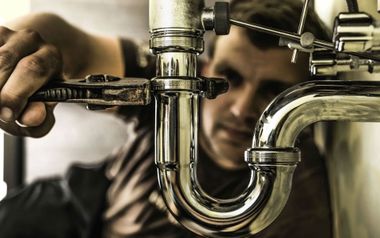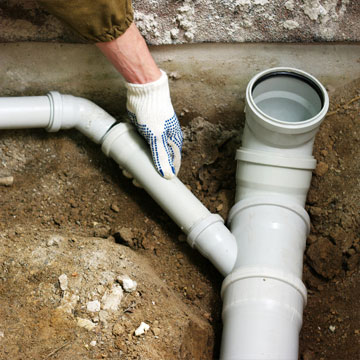The Complete Guide to Your House's Plumbing System Anatomy
The Complete Guide to Your House's Plumbing System Anatomy
Blog Article
We have stumbled upon the article involving Understanding Your Home's Plumbing Anatomy down the page on the web and reckoned it made good sense to discuss it with you on this page.

Recognizing just how your home's plumbing system functions is crucial for each home owner. From supplying clean water for drinking, cooking, and bathing to safely eliminating wastewater, a properly maintained pipes system is critical for your household's health and wellness and comfort. In this extensive guide, we'll explore the detailed network that makes up your home's plumbing and offer ideas on maintenance, upgrades, and managing common problems.
Intro
Your home's plumbing system is more than simply a network of pipelines; it's an intricate system that ensures you have access to clean water and efficient wastewater elimination. Recognizing its elements and how they work together can assist you protect against costly repairs and make certain every little thing runs efficiently.
Fundamental Parts of a Pipes System
Pipelines and Tubes
At the heart of your pipes system are the pipes and tubes that bring water throughout your home. These can be made of different materials such as copper, PVC, or PEX, each with its benefits in terms of longevity and cost-effectiveness.
Components: Sinks, Toilets, Showers, etc.
Fixtures like sinks, toilets, showers, and bathtubs are where water is utilized in your home. Comprehending just how these fixtures attach to the pipes system helps in detecting troubles and intending upgrades.
Valves and Shut-off Points
Valves regulate the circulation of water in your plumbing system. Shut-off shutoffs are vital throughout emergencies or when you require to make repair work, allowing you to separate parts of the system without disrupting water circulation to the entire residence.
Supply Of Water System
Main Water Line
The main water line connects your home to the metropolitan water or an exclusive well. It's where water enters your home and is distributed to numerous components.
Water Meter and Pressure Regulatory Authority
The water meter procedures your water use, while a stress regulator ensures that water streams at a safe pressure throughout your home's plumbing system, stopping damage to pipelines and components.
Cold Water vs. Warm water Lines
Comprehending the distinction in between cold water lines, which supply water directly from the primary, and warm water lines, which bring heated water from the hot water heater, helps in fixing and planning for upgrades.
Water drainage System
Drain Pipeline and Traps
Drain pipelines bring wastewater away from sinks, showers, and commodes to the drain or septic system. Traps protect against drain gases from entering your home and additionally trap particles that can trigger clogs.
Ventilation Pipelines
Ventilation pipelines enable air into the drain system, stopping suction that can slow down water drainage and cause catches to vacant. Appropriate air flow is vital for preserving the integrity of your plumbing system.
Value of Correct Drainage
Guaranteeing correct drain protects against back-ups and water damage. Consistently cleaning drains pipes and keeping traps can prevent expensive repair services and extend the life of your plumbing system.
Water Heater
Kinds Of Hot Water Heater
Water heaters can be tankless or standard tank-style. Tankless heating systems heat water as needed, while tanks store heated water for instant usage.
Updating Your Pipes System
Reasons for Upgrading
Updating to water-efficient components or replacing old pipes can enhance water top quality, reduce water bills, and boost the worth of your home.
Modern Pipes Technologies and Their Advantages
Check out modern technologies like smart leak detectors, water-saving bathrooms, and energy-efficient hot water heater that can conserve money and decrease environmental impact.
Cost Factors To Consider and ROI
Compute the in advance prices versus long-lasting financial savings when taking into consideration pipes upgrades. Many upgrades pay for themselves with minimized energy costs and less fixings.
Exactly How Water Heaters Attach to the Pipes System
Recognizing just how hot water heater link to both the cold water supply and hot water circulation lines helps in identifying issues like insufficient hot water or leakages.
Upkeep Tips for Water Heaters
Consistently purging your hot water heater to eliminate debris, inspecting the temperature settings, and examining for leakages can expand its life expectancy and enhance power effectiveness.
Common Plumbing Concerns
Leaks and Their Causes
Leakages can happen due to maturing pipes, loose installations, or high water pressure. Addressing leaks promptly prevents water damage and mold and mildew development.
Obstructions and Blockages
Clogs in drains and bathrooms are typically caused by flushing non-flushable things or an accumulation of grease and hair. Using drain displays and bearing in mind what decreases your drains can protect against obstructions.
Indications of Pipes Issues to Look For
Low water stress, slow-moving drains pipes, foul odors, or abnormally high water bills are signs of potential plumbing issues that need to be addressed promptly.
Pipes Maintenance Tips
Routine Evaluations and Checks
Schedule yearly plumbing inspections to capture problems early. Look for indications of leakages, rust, or mineral buildup in taps and showerheads.
DIY Upkeep Tasks
Easy tasks like cleansing faucet aerators, checking for commode leaks using dye tablets, or protecting exposed pipelines in cold environments can avoid significant plumbing concerns.
When to Call an Expert Plumbing
Know when a pipes problem requires specialist competence. Trying complex repair work without proper understanding can lead to more damage and higher fixing expenses.
Tips for Lowering Water Usage
Basic behaviors like fixing leaks immediately, taking much shorter showers, and running complete loads of laundry and meals can save water and lower your energy costs.
Eco-Friendly Plumbing Options
Consider sustainable plumbing products like bamboo for flooring, which is durable and environmentally friendly, or recycled glass for kitchen counters.
Emergency situation Preparedness
Steps to Take During a Plumbing Emergency situation
Know where your shut-off shutoffs lie and how to turn off the supply of water in case of a burst pipe or major leakage.
Relevance of Having Emergency Contacts Convenient
Keep contact info for regional plumbing technicians or emergency situation solutions readily offered for fast action throughout a pipes dilemma.
Ecological Influence and Preservation
Water-Saving Components and Home Appliances
Mounting low-flow faucets, showerheads, and bathrooms can substantially minimize water usage without compromising performance.
DIY Emergency Fixes (When Appropriate).
Momentary repairs like utilizing air duct tape to spot a dripping pipeline or positioning a pail under a leaking faucet can lessen damages up until an expert plumbing arrives.
Verdict.
Recognizing the composition of your home's plumbing system empowers you to maintain it effectively, saving time and money on repairs. By following regular maintenance routines and staying notified about modern pipes innovations, you can ensure your plumbing system operates successfully for several years to find.
The Anatomy of Your Home s Plumbing System
Understanding the anatomy of your home s plumbing system is essential for any homeowner. It not only helps in identifying potential issues but also facilitates effective communication with professionals when repairs or upgrades are needed. Your home s plumbing system is more than just pipes and faucets; it s a complex network that ensures the efficient and hygienic flow of water in and out of your house. In this blog, we ll dissect the crucial components of your home s plumbing system. For those in Antelope Valley, Brock Plumbing is your trusted partner for all your plumbing needs, ensuring your system functions smoothly and efficiently.
Water Supply System
Main Water Line: This is where your home s plumbing system begins. The main water line connects your home to the public water supply or a private well. Pipes and Shut-off Valves: Pipes distribute water throughout your home. Shut-off valves are crucial for controlling the flow of water and making repairs without shutting off the entire system. Drainage System
Drain Pipes: These pipes carry waste and water away from sinks, toilets, and showers. Vents: Vents allow sewer gases to escape and help maintain proper pressure in the drainage pipes, ensuring efficient flow of wastewater. Traps: Every fixture has a trap, a U-shaped pipe that holds water and prevents sewer gases from entering your home. The most common is the P-trap under sinks. Fixtures and Appliances
Fixtures and appliances are the most interacted with parts of your plumbing system. They include sinks, toilets, showers, dishwashers, and washing machines. Each fixture and appliance has its own supply and drainage connection, ensuring they receive clean water and can dispose of wastewater effectively.
Water Heating System
Your water heater is a crucial component, providing hot water to various fixtures and appliances in your home. It can be tank-based or tankless, with each type having its own set of advantages and maintenance requirements. Regular maintenance is essential to ensure efficient operation and extend the lifespan of the unit.
Sump Pump
In areas prone to flooding or with high water tables, a sump pump is an essential part of the plumbing system. It s installed in the lowest part of your basement or crawlspace and pumps out water that accumulates, preventing flooding and protecting your home from water damage.
Septic System
Homes that are not connected to a municipal sewer system have a septic system and an underground wastewater treatment structure. Understanding how to maintain your septic system is crucial to prevent backups, odors, and early system failure.
Conclusion
Your home s plumbing system is a complex and essential network, ensuring the efficient and hygienic flow of water in and out of your property. Understanding its key components helps in maintaining it properly and identifying issues before they escalate into major problems. For residents in Antelope Valley, Brock Plumbing is dedicated to providing top-notch services, ensuring that every part of your plumbing system is in perfect working order. Trust our team of professionals to handle all your plumbing needs, ensuring your home remains comfortable, safe, and well-maintained.
https://brockplumbinganddrains.com/blog/the-anatomy-of-your-homes-plumbing-system/

Do you really like reading about ? Give a comment further down. We'd be delighted to listen to your ideas about this article. We are looking forward to see you back again in the future. In case you appreciated our article plz remember to share it. Many thanks for your time spent reading it.
Additional Information Report this page